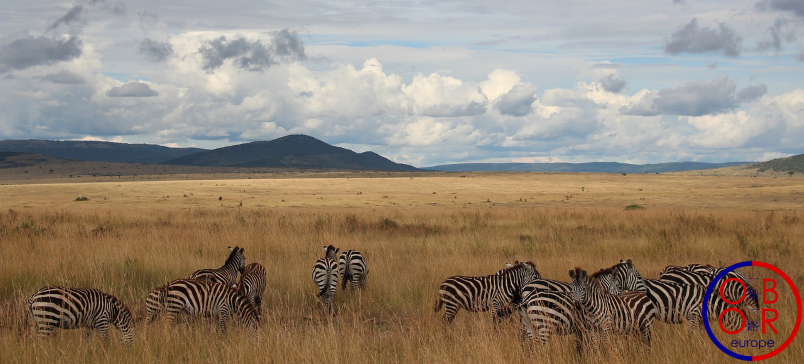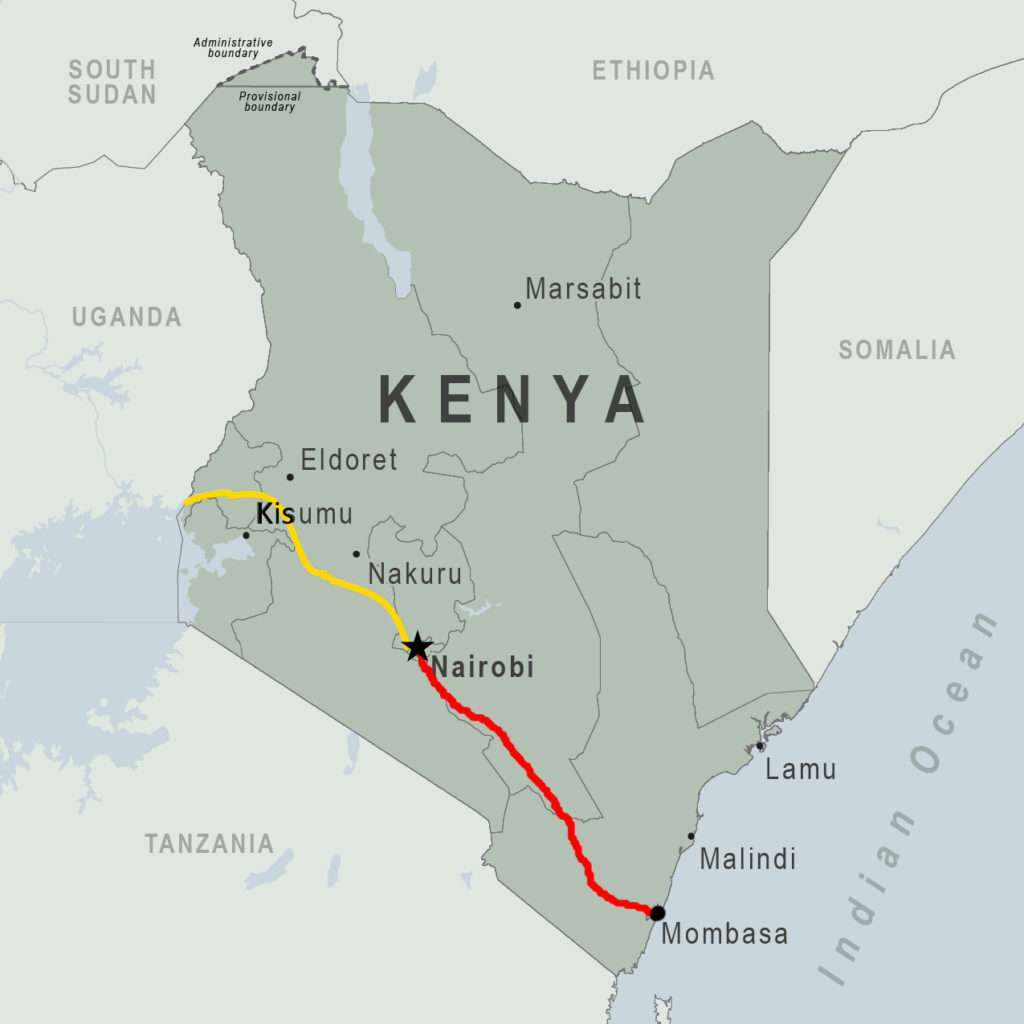by Dr. Sebastien Goulard

Kenya is one of China’s major partners in Africa and several agreements have been signed between China and Kenya. Since the establishment of the Belt and Road Initiative in 2013, the Kenyan port of Mombasa has been a key building block for the project on the continent.
Despite these agreements, the actual implementation of BRI-related projects in Kenya has faced ongoing obstacles. In one of the more recent setbacks on June 25, 2020, Kenya’s Court of Appeal declared as illegal the contract concluded between the “Kenya Railways Corporation” and the “China Bridges and Railway Corporation” (CBRC) regarding the construction of the railway line connecting Mombasa to Nairobi.
Sino-Kenyan agreements
Kenya, along with Ethiopia, is one of the African countries most involved in the BRI. Several memoranda of understanding and agreements across a wide range of sectors have been signed between Kenya and China in recent years. These have included agreements to strengthen Chinese tourism in Kenya in 2014, to increase Kenyan agricultural exports to the Chinese market and to strengthen innovation in 2018.
Kenya’s Development & BRI
According to the Kenyan authorities, participation in the BRI would speed up the implementation of its national development strategies.
Launched in 2008, the Kenyan “Vision 2030” program aims to make Kenya a new industrialized country by 2030 based on three economic, social and political pillars. The economic component notably includes the creation of several special economic zones such as the free port of Dongo Kundu, whose construction began in 2018.
This vision is complemented by the “Big Four Agenda” announced by President Uhuru Kenyatta in 2017.
This plan aims to:
1) Develop Kenya’s industrial sector, in particular the blue economy, textiles and agrobusiness ;
2) Build affordable housing and thus find solutions to urbanisation issues (500,000 housing units to be built by 2023) ;
3) Offer healthcare to every Kenyan;
4) Develop agriculture to combat malnutrition.
These priorities require significant resources and the modernization of the country’s infrastructure, with the BRI one possible mechanism for Kenya to achieve these goals.
However, some BRI projects in Kenya face obstacles.
Mombasa-Nairobi Standard Gauge Railway
The new line, whose construction contract has been questioned by a Kenyan court, is a structural crossover point for both the “Vision 2030” program and the BRI in Kenya. It connects Mombasa, the main Kenyan port, to the capital Nairobi. Since 2019, it has been extended to Naivasha in the west and may in the future link with Uganda.
Map of Kenya’s railway

A narrow gauge line had already been built on the same route by the British, but had been in poor condition since the 1990s, causing regular delays. In service since June 2017, the new line transports both passengers and freight.
It is one of the largest infrastructure projects in Kenya with a budget of $ 3.2 billion financed at 90% by low-interest loans from the Chinese bank EXIM. Built by CRBC, this line has been managed by “China Communications Construction Company” for the last five years.
The case
Since 2014, the Law Society of Kenya and other complainants have questioned the legality of the agreement between the Kenyan government and CRBC, due to the lack of a tender process. The case may be further reviewed by the Supreme Court of Kenya.
It is not the only BRI contract that is under question due to the lack of open calls to tender, similar cases have also occurred in Hungary.
However, it should be noted that although currently presented as a BRI project, the Mombasa-Nairobi railway line was fully developed as a joint initiative before the China’s launch of the BRI umbrella. It was in 2009, under President Mwai Kibaki’s administration that a first agreement was secured between the Kenyan ministry of transport and the Chinese company CRBC regarding the feasibility of the railway.
Lamu coal power station
It is not the first time that a contract or project between Kenyan and Chinese companies has been criticised by a court. In June 2019, Kenya’s National Environmental Tribunal court revoked the license granted to the “Amu Power Company” consortium (Chinese companies are members of the consortium and the “Industrial and Commercial Bank of China” was to partially finance the project) for the construction of a coal-fired power station near Lamu, whose old town is recognized as world heritage site by Unesco. Opposition from residents, who criticized its environmental impact, and who questioned the need for Kenya to develop coal-based energy, led to the adverse ruling by the National Environmental Tribunal. The plant, whose construction was originally scheduled to start in 2018, has since been delayed.
Despite the court ruling and the withdrawal of some financial institutions from the project, this plant may still be constructed when a new environmental impact assessment is conducted. However, as Christoph Nedopil Wang, director of the Green Belt and Road Initiative Center notes, BRI projects must take better account of local population’s environmental positions and favor renewable energy options which are becoming more and more competitive.
What future for the BRI in Kenya?
These various developments of BRI projects in Kenya do not in themselves jeopardize the partnership between Kenya and China , but highlight the weaknesses of the first BRI projects, namely a pereceived lack of competition and too little consideration for environmental issues. These limits are well known to Chinese authorities who are currently developing solutions that are more environmentally conscious, whilst also trying to open up BRI projects to non-Chinese companies in order to increase competition.
Kenya and China have common interests, in particular to bring the “Vision 2030”, “Big Four Agenda” and the BRI projects together, and these court rulings are not likely to threaten this partnership. On the contrary, they should make it possible to better structure future BRI projects from a legal point of view. A logical step for the BRI is to develop stronger coordination at a legal & judiciary level in BRI participant countries and to develop new mechanisms to resolve international disputes.
